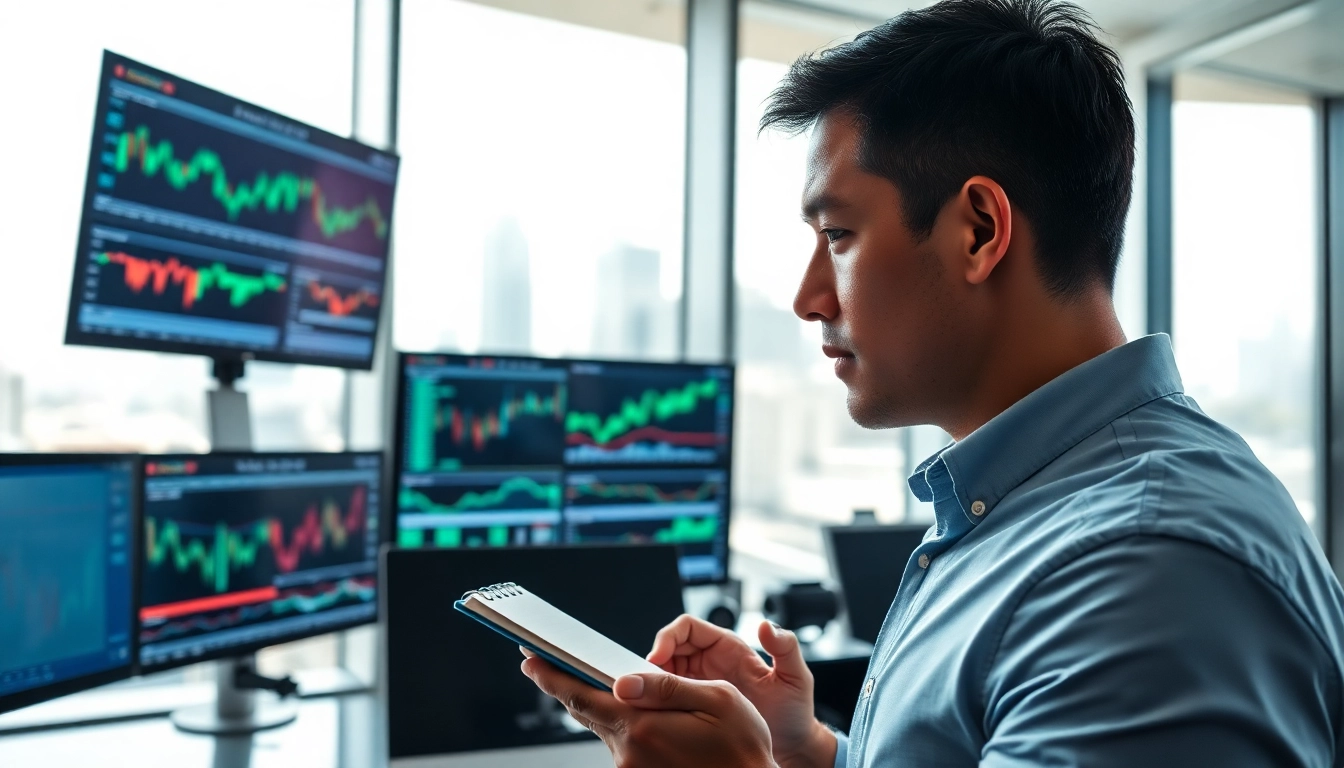Understanding Trade Futures: A Beginner’s Guide
Futures trading has become a vital part of the global financial markets, allowing traders to speculate on the price movements of various assets and commodities. Understanding trade futures is essential for both new and experienced traders alike. In this comprehensive guide, we will explore the fundamentals of trade futures, including what they are, the key concepts that drive them, and how they can be beneficial in your trading endeavors.
What are Trade Futures?
Futures are standardized agreements to buy or sell a specific asset or commodity at a predetermined price on a specified date in the future. These contracts can involve a wide range of items, including agricultural products like wheat and corn, energy resources such as oil and gas, and financial instruments like stock indices and currencies. Futures trading is primarily leveraged, allowing traders to control large positions with a relatively small amount of capital.
Key Concepts in Futures Trading
Understanding futures trading involves grasping several critical concepts:
- Margin: This is the initial deposit required to open a position. It acts as a security for the broker against potential losses.
- Leverage: Futures trading allows for significant leverage, meaning you can control a larger contract value than the amount of margin you put up. For instance, with a leverage of 10:1, a margin deposit of $1,000 allows you to control $10,000 worth of futures contracts.
- Contract Specifications: Each futures contract has specific terms such as contract size, tick size, and expiration date which must be understood by traders to make informed decisions.
- Settlement: Futures contracts can be settled in two ways: physical delivery of the asset at expiration or a cash settlement based on the difference between the contract price and the market price at maturity.
The Importance of Understanding Market Dynamics
Market dynamics, fueled by both fundamental and technical analysis, play a crucial role in determining future price movements. Fundamentals refer to the underlying economic factors that affect supply and demand, such as weather conditions affecting crop yields or geopolitical tensions impacting oil prices. Technical analysis, on the other hand, involves studying price charts and trading volumes to identify patterns and trends. As such, a deeper understanding of these dynamics allows traders to position themselves strategically within the futures markets.
Exploring the Benefits of Trade Futures
Trading futures can offer several advantages over other financial instruments, making them an attractive option for many traders. Below are some of the primary benefits associated with futures trading.
Leverage and Margin in Futures Trading
One of the most compelling benefits of futures trading is the ability to use leverage. This not only amplifies potential profits but also enhances the skill set required by traders. Although higher leverage increases the risk of loss, it can also lead to significant gains if managed wisely. Understanding margin trading can help traders maximize their returns while being compliant with financial regulations.
Flexibility in Participating Markets
Futures are available across various asset classes, including commodities, indices, currencies, and more. This diversity provides traders with a flexible trading environment to diversify their portfolio and find the best trading opportunities based on personal preferences or market conditions.
Risk Management Strategies for Futures Traders
Futures trading inherently involves risk, but through the use of various risk management strategies, traders can protect their capital. Strategies such as stop-loss orders, position sizing, and hedging can effectively mitigate risks. For instance, hedging is useful for farmers who might sell futures contracts for their crop yield, thus locking in prices even before harvest.
Common Challenges in Trade Futures and How to Overcome Them
While futures trading presents numerous opportunities, it also carries its unique set of challenges. Below are common hurdles traders face and how to navigate them effectively.
Navigating Market Volatility
Market volatility is a double-edged sword. While it creates potential trading opportunities, it also means that prices can swing rapidly and unpredictably. Traders can utilize volatility indicators, stay updated on news releases, and use appropriate stop-loss orders to better manage trades during chaotic market conditions.
Understanding Regulations and Compliance
Futures contracts are regulated by the Commodity Futures Trading Commission (CFTC) in the United States. New traders must familiarize themselves with various regulations and compliance requirements to avoid legal pitfalls. Regulatory bodies often provide resources and guidance to help traders stay informed.
Emotional Discipline in Trading
Trading can often evoke strong emotions, leading to poor decision-making. Developing emotional discipline is crucial for successful futures trading. Implementing a solid trading plan that includes clear rules for entering and exiting trades can help reduce impulsive actions based on fear or greed.
Advanced Strategies for Successful Futures Trading
As you delve deeper into futures trading, implementing advanced strategies can significantly improve your chances of success. Here, we explore several effective techniques.
Technical Analysis Tools for Traders
Utilizing technical analysis tools, such as moving averages, Bollinger bands, and Fibonacci retracement levels, can provide insights into market trends and potential reversal points. Traders can also employ chart patterns to identify breakout or breakdown opportunities in the prices of futures contracts.
Developing a Robust Trading Plan
A well-structured trading plan is critical for navigating the complexities of the futures markets. A robust trading plan includes defined strategies, risk management rules, and performance metrics to measure success. Traders should regularly review their plans and make necessary adjustments in response to market changes.
Backtesting Strategies to Minimize Risks
Backtesting involves testing trading strategies against historical data to evaluate their effectiveness before applying them in real-time trading. This process can help traders refine their strategies, minimize potential losses, and increase their confidence when executing trades.
The Future of Trade Futures: Trends and Insights
The world of futures trading is continually evolving. Understanding current trends and potential future developments can provide traders with a competitive edge.
Impact of Technology on Futures Trading
Technological advancements are playing a transformative role in futures trading. High-frequency trading algorithms, AI-driven analytics, and machine learning are being leveraged to develop more sophisticated trading strategies and execute trades at lightning speed. Furthermore, these technologies aid traders in making data-driven decisions, enhancing their overall trading performance.
Emerging Markets and Opportunities
With globalization, emerging markets present new avenues for futures trading. Countries with developing economies may experience increased demand for commodities, leading to price fluctuations that traders can capitalize on. Understanding these markets can enhance a trader’s portfolio and diversify risk.
Preparing for Economic Shifts and Global Events
Global events—such as geopolitical tensions, natural disasters, or economic forums—can significantly influence the futures markets. Traders should stay informed about key developments and global economic indicators to anticipate potential market movements and adjust their strategies accordingly.









